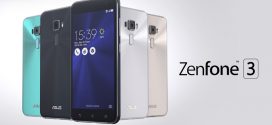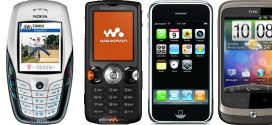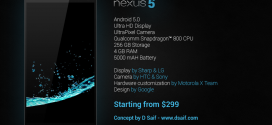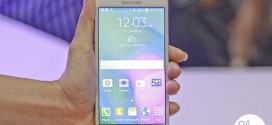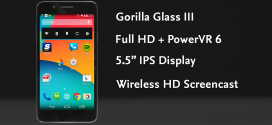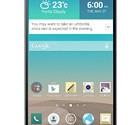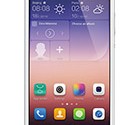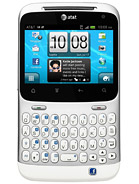 Today we shall be reviewing the HTC Status. This device is also know as the HTC ChaCha, well that’s the original version anyway. This is a branded version of the HTC ChaCha. This device was created for AT&T. There may or may not be ( I don’t remember actually ) a review of the HTC ChaCha on this website however I don’t really recommend reading it. I keep the older ones around since they remind me where my work has come from and where it has gone, as a “trophy” if you will, a reminder of how my work grew over the years. The HTC Status or HTC ChaCha is a pretty powerful phone nonetheless, or that’s what the service providers would tell you. By today’s standards it is pretty weak and it doesn’t really look all that great either ( I for one don’t really like QWERTY device but if you’re a fan of the BlackBerry classical design with QWERTY and TouchScreen you’ll love this one ). It functions relatively well, I’ve had the pleasure of working with one myself. But the HTC Status isn’t my type of phone in general, it’s more suitable to people who can’t stay away from Facebook for even a minute.
Today we shall be reviewing the HTC Status. This device is also know as the HTC ChaCha, well that’s the original version anyway. This is a branded version of the HTC ChaCha. This device was created for AT&T. There may or may not be ( I don’t remember actually ) a review of the HTC ChaCha on this website however I don’t really recommend reading it. I keep the older ones around since they remind me where my work has come from and where it has gone, as a “trophy” if you will, a reminder of how my work grew over the years. The HTC Status or HTC ChaCha is a pretty powerful phone nonetheless, or that’s what the service providers would tell you. By today’s standards it is pretty weak and it doesn’t really look all that great either ( I for one don’t really like QWERTY device but if you’re a fan of the BlackBerry classical design with QWERTY and TouchScreen you’ll love this one ). It functions relatively well, I’ve had the pleasure of working with one myself. But the HTC Status isn’t my type of phone in general, it’s more suitable to people who can’t stay away from Facebook for even a minute.
GENERAL
We will begin by checking out some of the more general features. Here you can find information about the supported networks and the network types as well as the announcement and release dates. The HTC Status supports both 2G and 3G network types. The networks supported by the HTC Status are as following : GSM 850 / 900 / 1800 / 1900 ( the 2G ones ) and HDPA 850 / 1900 ( the 3G ones ). The HTC Status was announced in June 2011 and was released a month later on the 17th of July 2011.
BODY
Following up is the review of the body of the HTC Status. Here you can find details about the aspect of the device, facts about : the dimensions, the weight and whether or not the HTC Status has anything that would make it stand out from a crowd. Now the HTC Status is around 114.4 x 64.6 x 10.7 mm big. It weighs somewhere around 120 grams. As you can plainly see for yourself, the HTC Status has a QWERTY keyboard and a small Facebook button should you be too lazy to type the website URL all by yourself. As I’ve said before, this phone is THE phone to have for any Facebook addict.
DISPLAY
Following up is the review of the HTC Status. You can find information on this part about the type of screen, the screen size, the screen resolution and the pixel density as well as the screen protection and whether or not it has any items that would make it stand out from a crowd. The type of screen of the HTC Status is a TFT capacitive touchscreen with approximately 256 thousand colors. The screen is around 2.6 inches big and it houses a resolution of around 480 x 320 pixels. The pixel density of the HTC Status is around 222 ppi. The HTC Status’s screen also has a very effective protection – Corning Gorilla Glass.
SOUND
Moving on we will take a look at the audio output capabilities of the HTC Status. Here you may find information about the alert types, the speaker and audio jack as well as whether or not the HTC Status has any distinguish-able marks. One may say that this device is pretty basic since it has no means of sound enhancement whatsoever. The alert types of the HTC Status are : Vibration, MP3 and WAV ringtones. The HTC Status also has a Loudspeaker and a 3.5 mm jack.
MEMORY
Moving on is the review of the memory of the HTC Status. Here you can find info about the internal storage space and ways of enhancing it as well as the RAM memory. The HTC Status has an internal storage space of 512 MB of ROM ( out of which I don’t know how much is user available since usually ROM memory is reserved for the system of the phone ). This phone also has a Micro SD card slow which can function with any Micro SD card of up to 32 GB. The RAM of this device isn’t that great, but then again it’s also halfway decent – 512 MB of RAM.
DATA CONNECTION
This part of the review shall cover the data connectivity of the HTC Status. You can find info here about the GPRS and EDGE, the Speed and WLAN as well as the Bluetooth and USB of the HTC Status. The HTC Status has both GPRS and EDGE but I have no idea what class they are since it isn’t specified. The speed of the HTC Status is HSDPA at around 7.2 MB/s. The WLAN of the HTC Status is a Wi-Fi 802.11 b/g/n with Wi-Fi hotspot. The Bluetooth of the HTC Status is Bluetooth v3.0 with A2DP. The USB connection of this device is Micro USB v2.0.
CAMERA
Following up is the review of the camera of the HTC Status. Here you can find info about the main and secondary cameras as well as their features and capabilities. The main camera of the HTC Status is a 5 MP snapper capable of photographing at up to 2492 x 1944 pixels. The HTC Status’s main camera has the following features : LED flash, Geo-Tagging and Face Detection. Also the main camera is capable of recording video as well but I can’t say at what quality since it isn’t specified. The HTC Status also has a secondary 1.3 MP frontal camera.
BATTERY LIFE
Following up is a brief review of the battery of the HTC Status. Since battery life is such a big problem with Android devices, you can find info here about the type of battery and how long it can function. The HTC Status has a Standard Li-Ion 1250 mAh battery. The said battery can function for around 636 hours of stand-by time and up to 6 hours and 30 minutes of talk time.
HARDWARE
Following up is the review of the hardware of the HTC Status. Here you can find information about the processor, motherboard and graphics card. Sadly, the HTC Status only has two of the three : the processor and motherboard. The processor of the HTC Status is a Single-Core 800 MHz processor and the motherboard of this device is a Qualcomm MSM7227.
SOFTWARE
Following up is the review of the operating system of the HTC Status. Here you can find information about the version of the OS that this device has and whether or not it can be upgraded to a future one. The OS version of the HTC Status is Android OS v2.3 Gingerbread. It has no official supported versions other than the installed one.
FEATURES
Lastly is the review of some of the more general features of the HTC Status as well as its capabilities. The sensors of the HTC Status are as following : Accelerometer, Proximity and Compass. The messaging on this device can be done via SMS ( with Threaded View ), MMS, E-Mail, Push Mail and IM. The browser of the HTC Status uses HTML and has no integrated support for Adobe Flash. The HTC Status doesn’t have a radio, but you already know how to fix that. The GPS of the HTC Status has support for A-GPS. The HTC Status also has Java via Java MIDP emulation. The HTC Status is available in the following colors : Black and Silver.
Here is a brief list of what the HTC Status can do :
- Facebook dedicated key
- SNS integration
- Google Search, Maps, Gmail
- YouTube, Google Talk, Picasa integration
- MP3/AAC+/WAV/WMA player
- MP4/H.264 player
- Organizer
- Document viewer
- Voice memo
- Predictive text input
This concludes our little review of the HTC Status. If you feel that anything is lacking from this review feel free to leave your suggestions for things which should be added in the comment section below and I’ll be sure to take them into consideration when writing my future projects.
If you would like to purchase the HTC Status you can do so by clicking this link. Click HERE.


